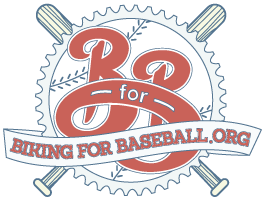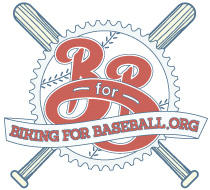The Overwhelming World of Baseball Statistics
I wanted to do some research on this topic before posting because there is so much data and information available. It’s actually very overwhelming, but very interesting at the same time. It’s a simple fact that baseball is a statistician sports fan’s dream. Most everyday players in the major leagues will get around 600 or 700 plate appearances. With 162 games and that many times at the plate, the large sample size is great to get some very telling information which will allow fans to draw reliable conclusions about players. It’s great!
Of course, you can tell a lot more about a hitter from one year of data than you can about a pitcher. Sorry pitchers, but this post is going to focus on offensive statistics (chicks dig the long ball!). FanGraphs is a great resource, and I recommend everyone to visit that website. There is so much information, and it really does help you appreciate the beautiful game of baseball in a more scientific way. Joe Posnanski is a huge proponent of advanced statistics, and I recommend reading his blog as well.
On FanGraphs Offensive Statistics page, the first sentence disclaimer says it all:
“Whatever you may do, do not use batting average or RBIs to evaluate a player’s talent level. “
Batting average and RBI are good descriptors of what has happened on the field, but very poor tools to evaluate how good hitters are. Lead-off hitters have less opportunity to drive runners home, so RBI is a matter of opportunity more than skill. The value of batting average depends on how much you value how a hitter gets on base. Again, the awesome Joe Posnanski wrote about 14 Crazy baseball facts, and one of the facts was that Tim Raines reached base more times than Tony Gwynn. Both hitters had about the same amount of plate appearances, but Tim Raines reached base more often. Tim Raines was not known for his batting average like Tony Gwynn (Tim Raines .294 career batting average to Gwynn’s .338), but he was able to get on base with more walks. All else equal, isn’t a walk just the same as a base hit. Base hits can advance runners, but batting average doesn’t even take that into account. So in this case, a walk would be equally valuable when using batting average to compare players. When players walk, they are still getting on base and giving their teams the opportunity to score. What is even more fascinating about this crazy baseball fact is that Tim Raines scored 180 more runs that Gwynn over his career. Now, much of that has to do with Tim Raines’s speed, Gwynn’s lack of speed, and the skills of the players on their teams who would drive them in. Considering the fact that Gwynn was voted into the Hall of Fame with 97.6% of the vote and Raines is not a Hall of Famer, people greatly undervalue walks and the skills of Tim Raines. I’d like to talk about more advances statistics from FanGraphs, but this quirky fact was too good to pass up.
Moving On.
For newbies to complex baseball statistics, FanGraphs recommends OPS or OPS+. OPS is very simple to understand because it combines the player’s on-base percentage and their slugging percentage. Easy enough. In this case, the walk is included in the on-base percentage., which helps players like Tim Raines. OPS+ normalizes a player’s OPS by adjusting for small variables that might affect the OPS, such as ballpark factors. Hitters won’t be generously aided by playing at Coors Field, or they won’t be at a disadvantage by watching potential home runs being caught by outfielders at Petco Park. OPS+ is on an easy-to-understand scale with 100 OPS+ being the league average. Below is a chart that shows OPS values from 2010, and players that fall into select percentiles.

Statistics show that on-base percentage is about twice as important as slugging percentage in creating runs, so many stat heads prefer an even more complex Weighted On-Base Average (wOBA). Weighted On-Base Average combines all the different aspects of hitting into one metric, weighing each of them in proportion to their actual run value. Because OPS weighs on-base and slugging percentages equally, it does not measure value of a hitter as well as wOBA. Again, the chart below shows wOBA from 2010. No wonder Josh Hamilton was the MVP!

In my opinion, one of the most baffling and innovative statistics is WAR. Wins Above Replacement. What the heck does that mean? What kind of replacement are they talking about? According to Fan Graphs, WAR basically looks at a player and asks “if this player got injured and their team had to replace them with a minor leaguer or someone from their bench, how much value would the team be losing?” For example, as of July 7 Jose Bautista has a WAR of 6.1, meaning he has added more than 6 wins of value to his team over a standard minor league replacement. WAR is determined by taking offensive, defensive, and base running metrics into account. Defensive and base running metrics are for another time, but how do they figure out how many wins hitters can provide with their bat?
The statistic that determines the offensive side of WAR is theWeighted Runs Above Average (wRAA). This is based off of wOBA and measures the number of offensive runs a player contributes to their team. Zero is league-average, so a positive wRAA denotes above-average performance. Conversely, a negative wRAA denotes below-average performance, i.e. Adam Dunn. Ten wRAA is equal to one win to calculate WAR. For your reference, I’ve included a graph of cumulative career WAR for Tim Raines and Tony Gwynn.

In my research, the best statistic I was able to find was that Babe Ruth has a wRAA of more than twice what Alex Rodriguez has. I recommend you to take a look at all the statistics available, and make educated conclusions about your favorite players. Its fun! Is your team’s right fielder ever going to show some plate discipline to have a tolerable OBP? Which players shouldn’t be on the All Star team because their statistics are poor this year? So, now that you have the dazed and confused look from the technical baseball statistical jargon, enjoy summer and watch a lot of baseball!


